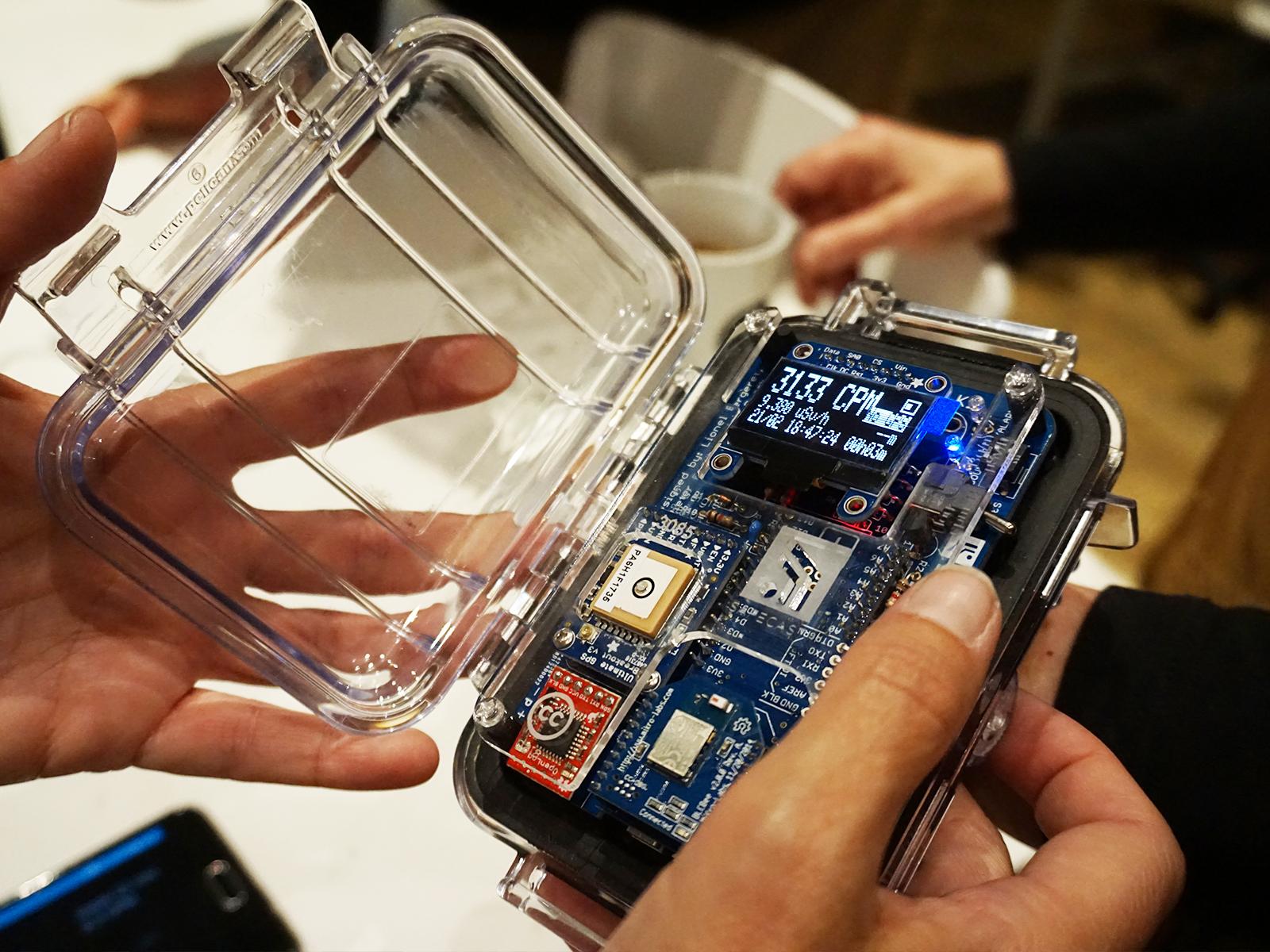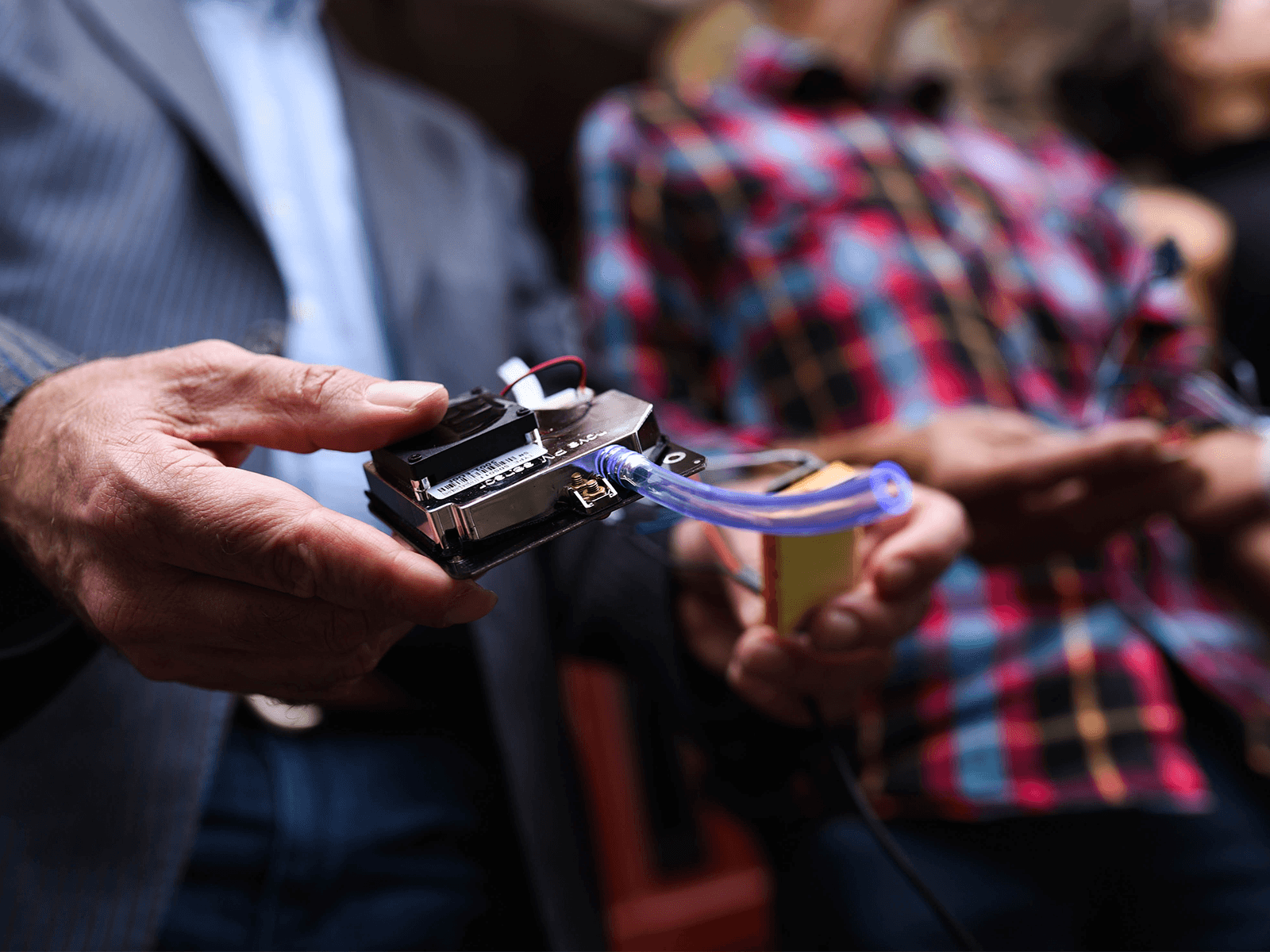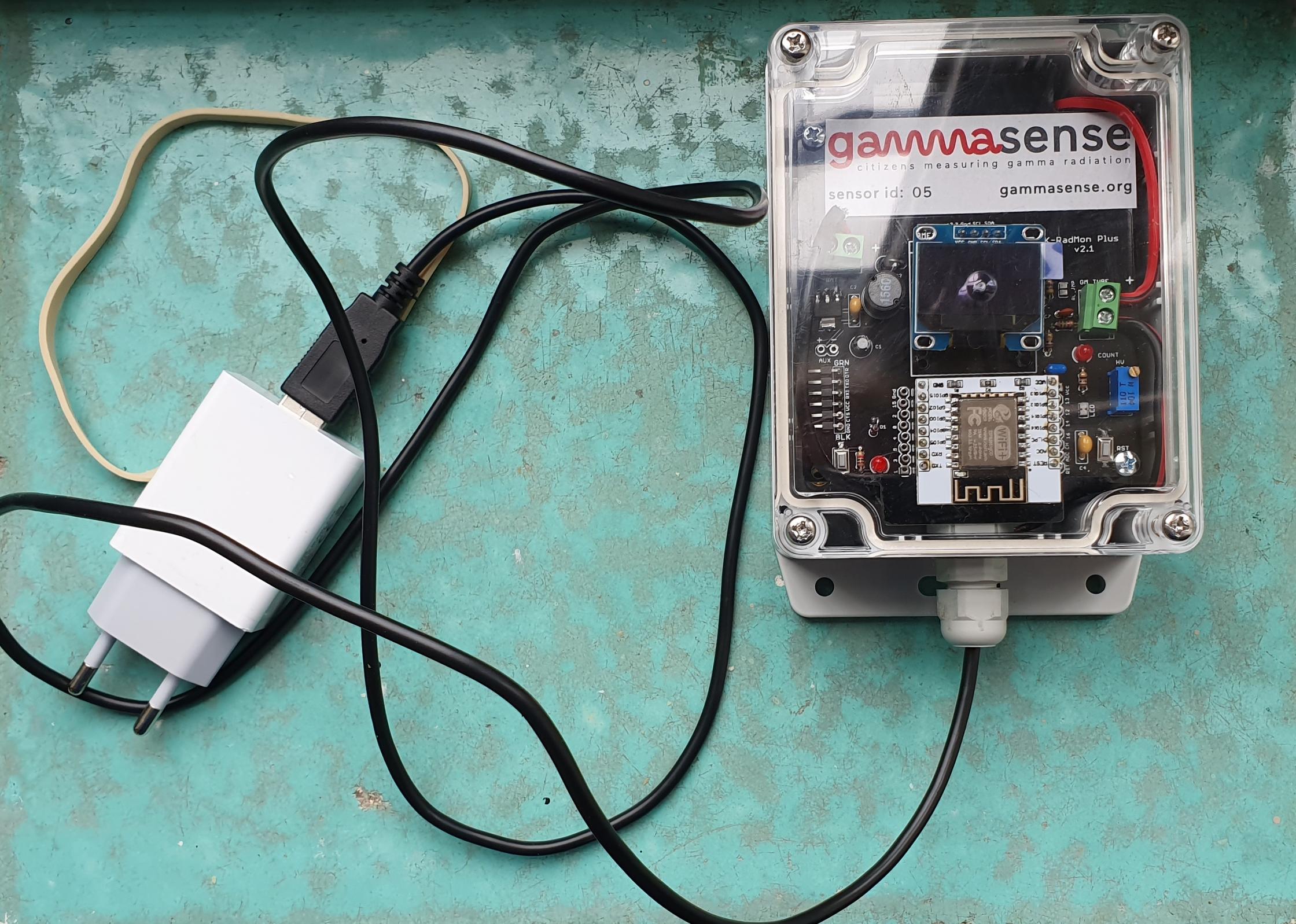On Thursday, February 21, Waag hosted a workshop on how to measure radiation with low-cost sensors. Almost 40 people came to participate and experiment with several cables, metal tubes and diode sensors that can be put together to radiation detectors. Every time the radiation level increases, a little bell rings. The workshop was designed to make people understand what causes a sensor to ring by sharing knowledge about how to measure gamma radiation.
Impact of radiation
Basically gamma radiation is emitted energy that comes in waves from radioactive atoms. Even though it is not visible for the eyes, it can cause high damage to organism and their cells. "I came here today to learn about the impact of nuclear radiation on human bodies", said Tineke from Amsterdam, who works as a researcher.
After she heard TV host Arjen Lubach telling that nuclear energy is not that much of a danger, Tineke decided to enrich her knowledge about these little waves that affect human bodies in a big way. Rather than just trusting in the words of a TV opinion maker, she visits the Waag lab to gain a basic understanding of the so called gamma waves.
Who are attending?
The range of the workshop guests is broad – some of them were already doing research about the impact of nuclear radiation on the environment and brought their own measuring kits. But regardless of whether they have already assembled their own radiation meters at home, or are just beginning to understand what nuclear energy is, the workshop participants have one thing in common: They all want to know how they can empower themselves over this environmental threat by gaining knowledge about it.
This works by knowing how to measure the radiation in your direct environment by yourself – which is possible with GammaSense 2.0. The project is developed by Waag together with the National Institute for Public Health & the Environment (RIVM) and the World Information Service on Energy (WISE). With open-source tools, everyone can measure nuclear radiation just by having a smartphone or a laptop with a camera (CMOS) sensor.
And so the workshop participants stand together in the Waag lab and explore the radiation exposure of various objects such as glasses or bracelets. Glowing surprise: objects made out of glass with uran oxides such as drinking cups from the 70’s do not only make the bell of the radiation sensor ring with their radiation, they also glow in a bright green when UV light touches them.
The amount of radiation was very light and harmless, but sometimes the displays of the measuring instruments showed different results. So this is why it is so important to do more research on radiation in a broader field. A large amount of cameras is possibly sensitive enough to give a relatively reliable picture of radiation levels and Waag is working on an improvement of the algorithm that will do that. Next to measuring with your camera, small and cheap sensors are also available.
DIY sensors
Within this year the GammaSense 2.0 team plans to put 50 of these DIY sensors across the Netherlands to see what extent appropriate measurements can be derived from this. This network will allow citizens to add their own data to the radiation measurements made by official bodies. Or just as workshop guest Tineke put it in the right words: "Only if we all together understand, how things work, we can start acting on the issues that concern the citizens."
Are you interested in nuclear radiation and experimenting with measurement methods? Read this earlier article for more information.


